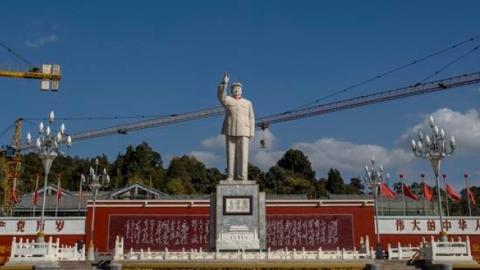This week, China wrote a $14 billion check to bail out Hengfeng Bank, one of the many provincial banks that used off-ledger loans to fund China's economic growth. While news of a US-China trade deal dominates media coverage, Hengfeng is a sign of the economic and social crises to come, as China grapples with a domestic debt crisis caused by decades of shadow banking and property-driven revenues.
In his new report, China's Economic Slowdown: Root Causes, Beijing's Response, and Strategic Implications for the US and Allies, Hudson Senior Fellow Dr. John Lee examines how Xi Jinping's ambitious geostrategy is inextricably linked with China’s worsening domestic and economic imbalances.
By prioritizing national power, Dr. Lee argues, Beijing is shortchanging the local governments that are responsible for the country's social and public services. Scroll below for highlights from the new report.
• Beijing will soon have to confront its own economic reality and fiscal mortality. The solvency of local governments that are overwhelmingly responsible for providing social and public goods, and the stability of the entire financial system, are presumably higher priorities than building the nation’s military power.
• China will not be able to achieve its external objectives without the cooperation of the US and other major advanced economies. Despite its size, its economic tools and levers in the world are surprisingly limited in important respects. Even the resilience of its domestic economy is enormously vulnerable to US policies.
• Contrary to the view that Xi has absolutist control over the CCP, Xi’s high tolerance for risk is causing immense angst for other senior Communist Party members and Chinese policy makers. The more Chinese failures and the rise in international resistance are attributed to Xi’s actions, the more pressure he will feel to retreat and take a more cautious approach.
The sources of China's potential fiscal and financial crisis:
1. Shadowing banking and local debt: China's local governments have long raised revenue by appropriating rural land, rezoning it, and selling it for industrial or residential uses. In 2014, up to 70% of local government income was from rezoning proceeds. To fund sales and construction, over 155,000 local government financing vehicles (LGVFs) were created to skirt restrictions. As the property market cools and the debt burden rises, local governments and developers will be unable to meet their debt obligations.
2. Aging society, unfunded pensions: Only one-third of all urban residents and less than 5 percent of rural residents have some form of central, provincial, or local pension. Reports estimate that this pension liability could grow to $10.8 trillion over the next two decades, or almost 40 percent of GDP.
3. The local revenue gap: The central government has increasingly reduced the tax revenue that local governments rely on, while expecting them to pick up a larger tab of expenditures related to social and public services. Recently, the gap in needed revenue has been bridged by proceeds from land and property sales, but as these sales slow, there could be an additional $500 billion local government fiscal gap by the end of decade.
4. Treading water on debts: Hundreds of billions of dollars — estimated to be around one-third of all local government borrowings — need to be found each year just to stave off the insolvency of LGFVs. If Beijing chooses to formally recognize what may be more than a trillion dollars’ worth of distressed and non-performing loans, it will require hundreds of billions of dollars to rescue and recapitalize the balance sheets of state-owned lending institutions.
5. Ambitions overseas: China’s rapid advancement as a military power imposes massive costs. The PLA’s budget has increased at double-digit rates as Beijing endeavors to influence or control Xinjiang, Tibet and Hong Kong; police its borders with Russia and India; develop cyber, surveillance, and space assets; and quell the average 100,000 mass unrest events which occur each year in China; and enforce anti-access/area denial capabilities across the South China Seas.














